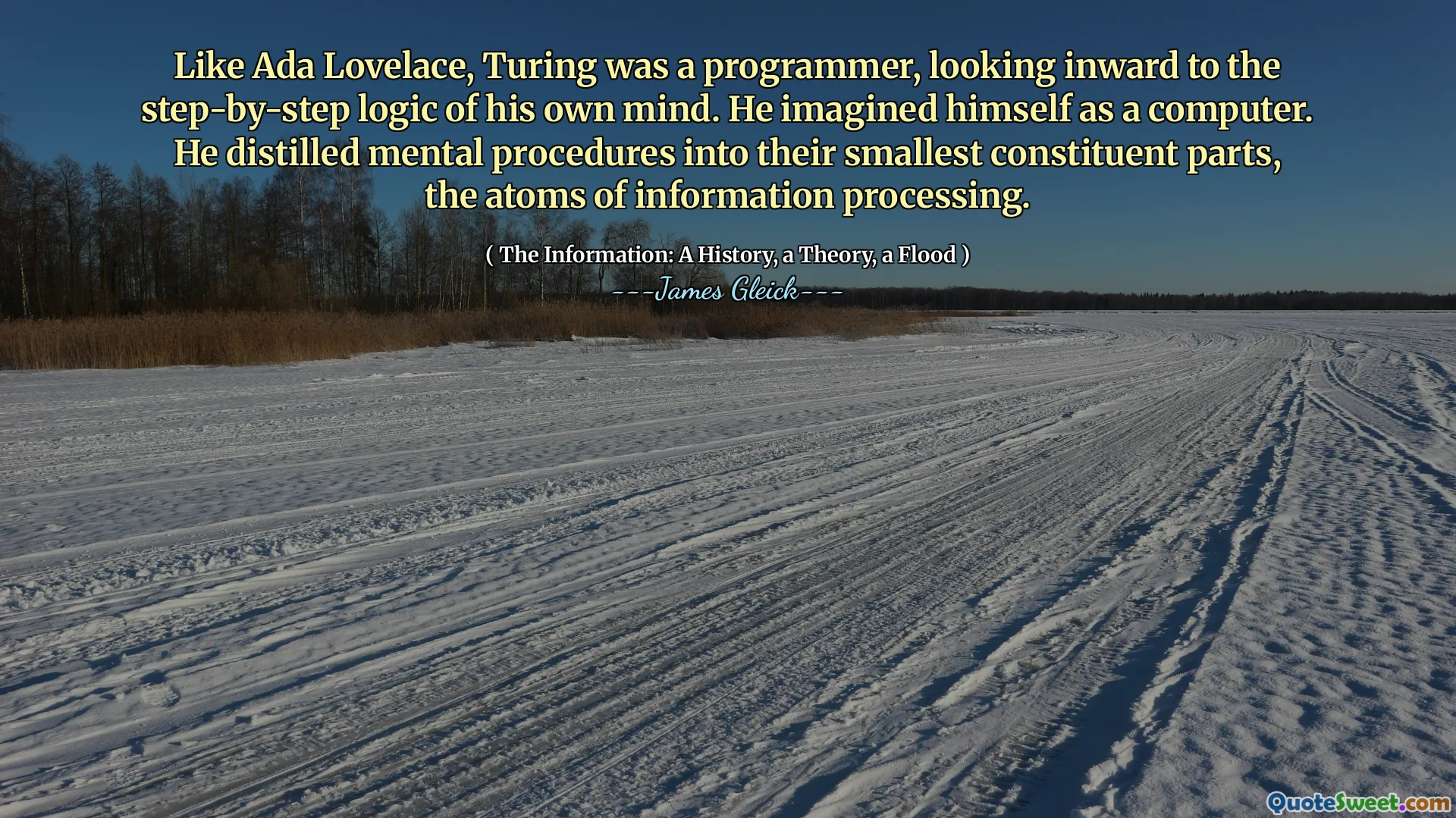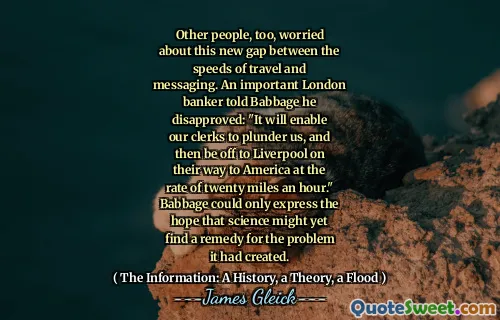
Like Ada Lovelace, Turing was a programmer, looking inward to the step-by-step logic of his own mind. He imagined himself as a computer. He distilled mental procedures into their smallest constituent parts, the atoms of information processing.
This quote beautifully encapsulates the profound insight of Alan Turing into the nature of computation and the mind. It highlights how Turing approached thinking itself as a form of computation, embodying an analogy that has reverberated through cognitive science and computer science ever since. When Turing envisioned himself as a computer, he didn't merely see himself as a machine but recognized the fundamental processes that underlie human cognition. His efforts to break down mental procedures into their atomic components reflect a scientific aspiration to understand intelligence and reasoning at the most elementary level, akin to how a chemist understands matter by its fundamental atoms. This perspective has led to the development of artificial intelligence, where complex tasks are synthesized from simpler, well-understood algorithms. It also raises profound questions about consciousness, free will, and what it truly means to think, as it suggests that mental processes might be replicated or simulated at a computational level. The comparison to Ada Lovelace emphasizes a shared pioneering spirit—the idea that imagining the mind as a machine leads to new modes of understanding and creating technology. Turing's conceptualization echoes throughout modern computing, influencing how we design algorithms, understand neural networks, and explore the boundaries of machine intelligence. His work embodies the compelling vision that to comprehend the mind, we must first map out the logical, step-by-step processes it utilizes and then replicate or simulate those processes through formal systems.








